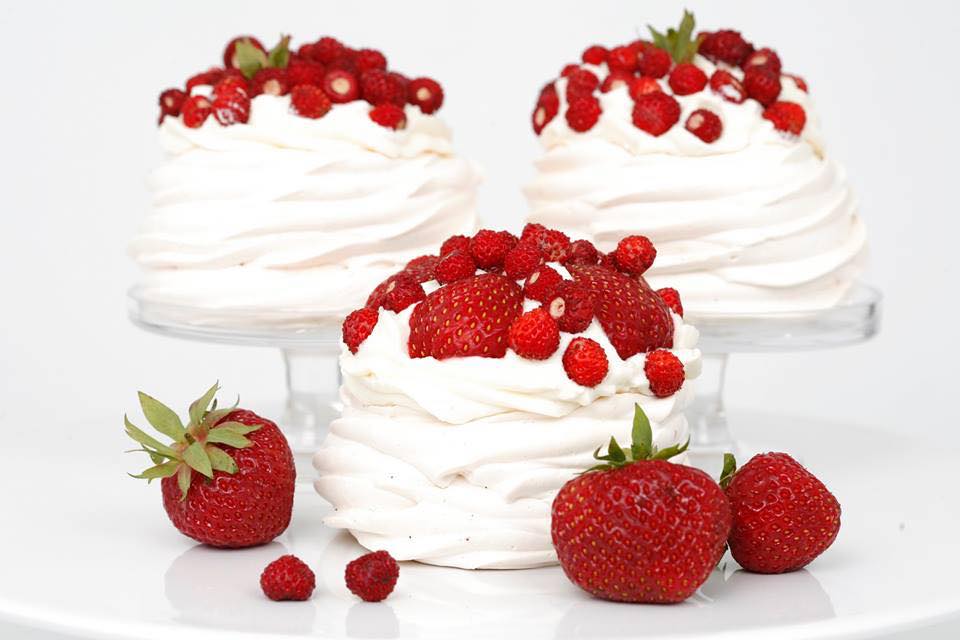About our favorite
Pavlova dessert
We know that you know. Although, when it comes about Pavlov, some people still think of the famous dog used by the professor to set up his experiments…
And now your attention, please: imagine a cloud of soft, puff soufflé covered by elegant, like a tutu skirt, yet crisp meringue… There is airy whipped cream on top, in which sweet-smelling berries, such as strawberries, raspberries, blueberries, and what is more, pomegranate and passion fruit, are wonderfully immersed…
So, do you already have that unconditioned reflex?
We always have it!
If we take it seriously, a lot has been written about the history of origin of the Pavlova dessert. Honestly, every restaurant in the world that has ever cooked Pavlova can tell its favorite story.
Anyway, one thing is certain: the marvelous cake was named after the greatest Russian ballerina who was on tour in Australia and New Zealand in 1926. In 1997, professor Leach.Helen M. even wrote a whole book telling this confusing and almost detective story “The pavlova cake: the evolution of a national dish”. There is a big article about it on the Wiki website. Feel free to follow the link and read it).

Subtle details of the
“Pavlova” art
Pavlova is one of the most simple, yet complex desserts at the same time. You can easily learn how to perfectly cook it at home. Ironically, it is extremely difficult to make a good cake in a restaurant or, what is even harder, at a production facility.
Egg-white meringue is the base of the cake. It should be SOFT inside and CRISPY outside. Over-dried layers, broken pieces scattered on a plate… It may be the case, but this is not Pavlova…
Dessert cream is SUGAR-FREE whipped cream. It perfectly fits by texture and BALANCES the sweet taste of meringue. Mascarpone? Cream cheese? You can try them at home, but this is not a traditional recipe.
Finally, berries (strawberries, raspberries, blueberries, wild strawberries) or fruits (kiwi, passion fruit) with a sweet sour or sour taste! These are, obviously, perfect ingredients in summer! In winter, you have to use products of genetic engineering and selection from Holland, Egypt and Spain. “Frozen and unfrozen” berries in bags work best for fillings, particularly in potpies.
The ideal Pavlova is a harmonious balance between a sweet taste and a non-sweet taste, a delicate balance of textures, and you have no more than a couple of hours to immediately eat the tender cake yourself or offer it to someone else. Pavlova does not like to wait.
It is the latter condition that makes it almost impossible to cook the true Pavlova in a restaurant or at a production facility. The dessert covered by natural cream gets soft in a couple of hours, and in a day its pleasing appearance vanishes into thin air.
What is offered under the guise of Pavlova?
In a store, you will most likely be offered usual meringue. At home, you can put whipped cream and any berries on it in order to get a kind of retired Pavlova: not perfect, but still good.
However, this is not the case with restaurants. If a restaurant has its own pastry chef, he will need to spend several hours a day to make Pavlova. In fact, cakes should be left in the oven for an hour and a half! Moreover, a dessert master shall always have a mixer on hand to whip cream even for one piece of Pavlova to be served. Also, a restaurant has to keep fresh berries in the fridge for this occasion.
It’s not easy, isn’t it? Therefore, you’d better learn how to cook Pavlova at home! You can be sure this is not a big deal.

By the way, here is a great recipe
Some of you will make it good on the first try, while others on the third try. You have different ovens, high-power or low-power mixers. You should find YOUR OWN recipe.

